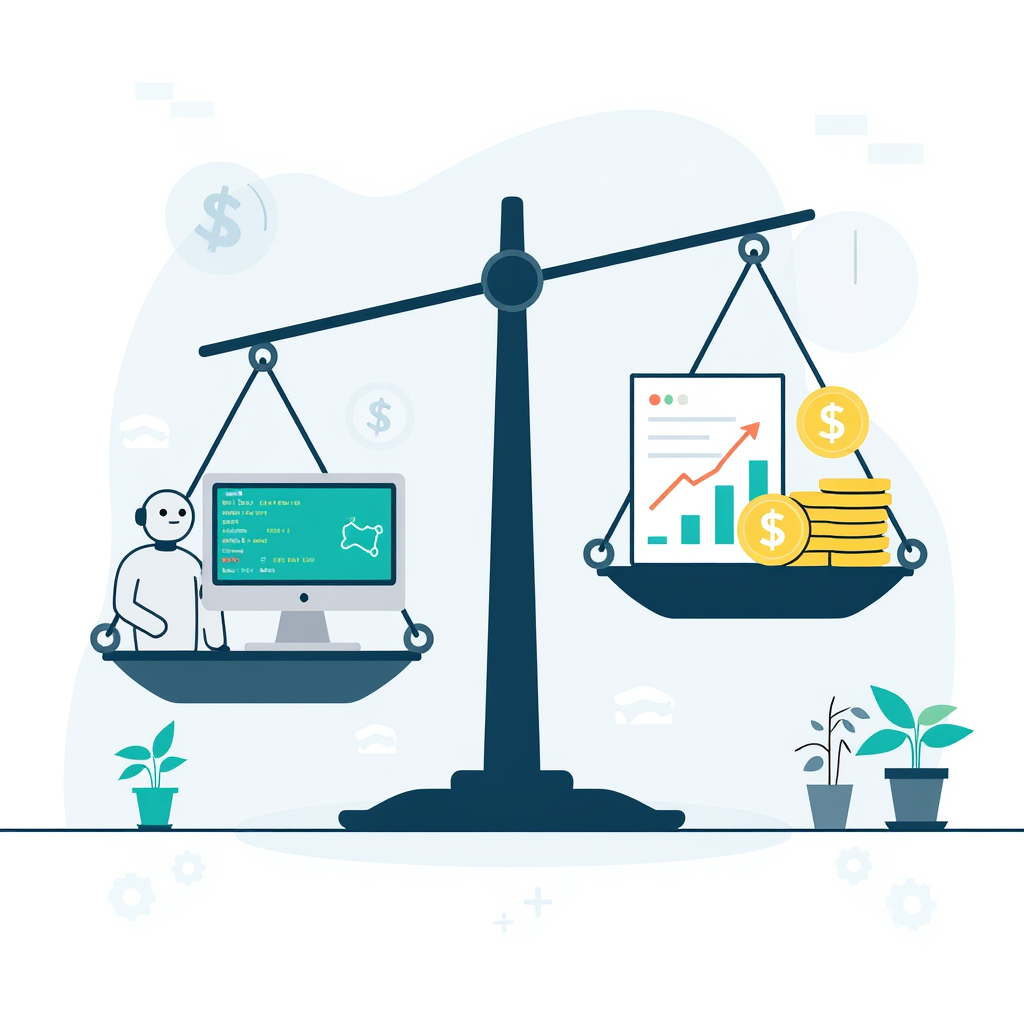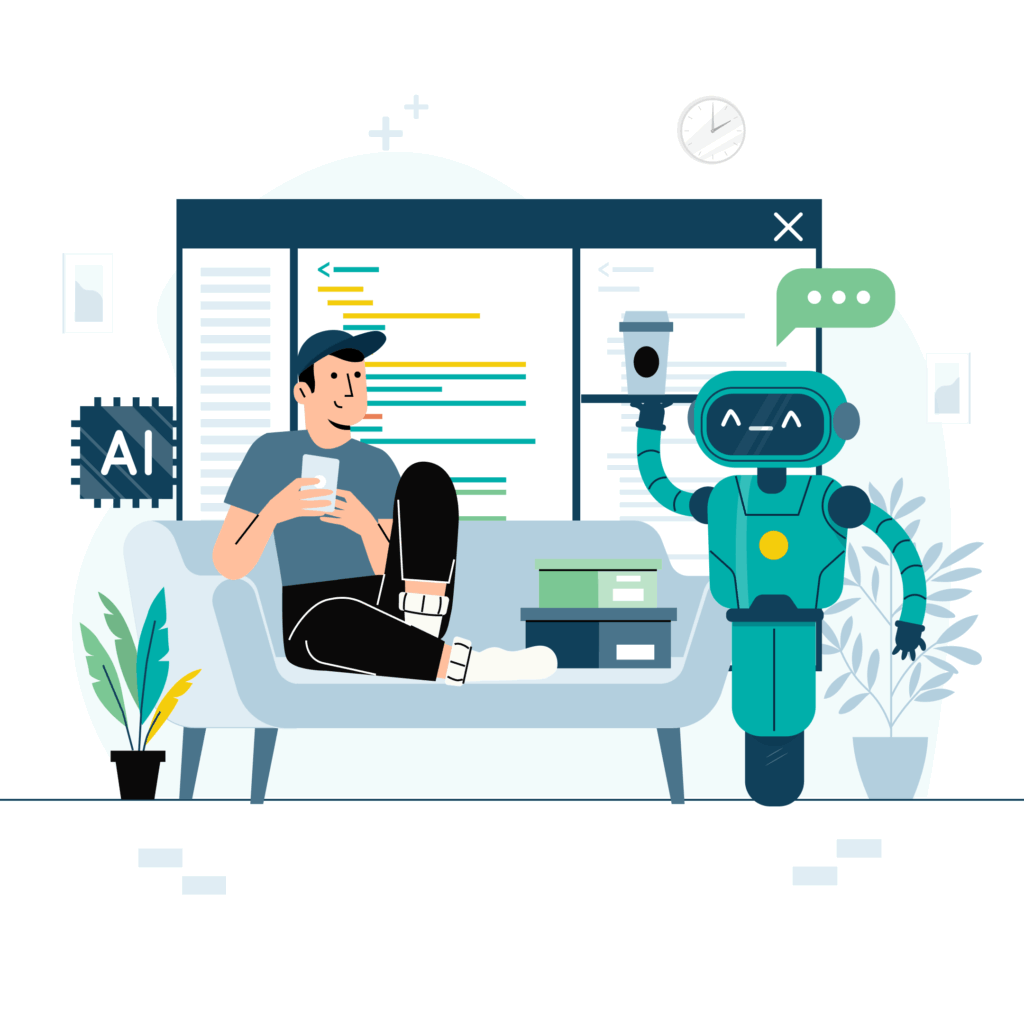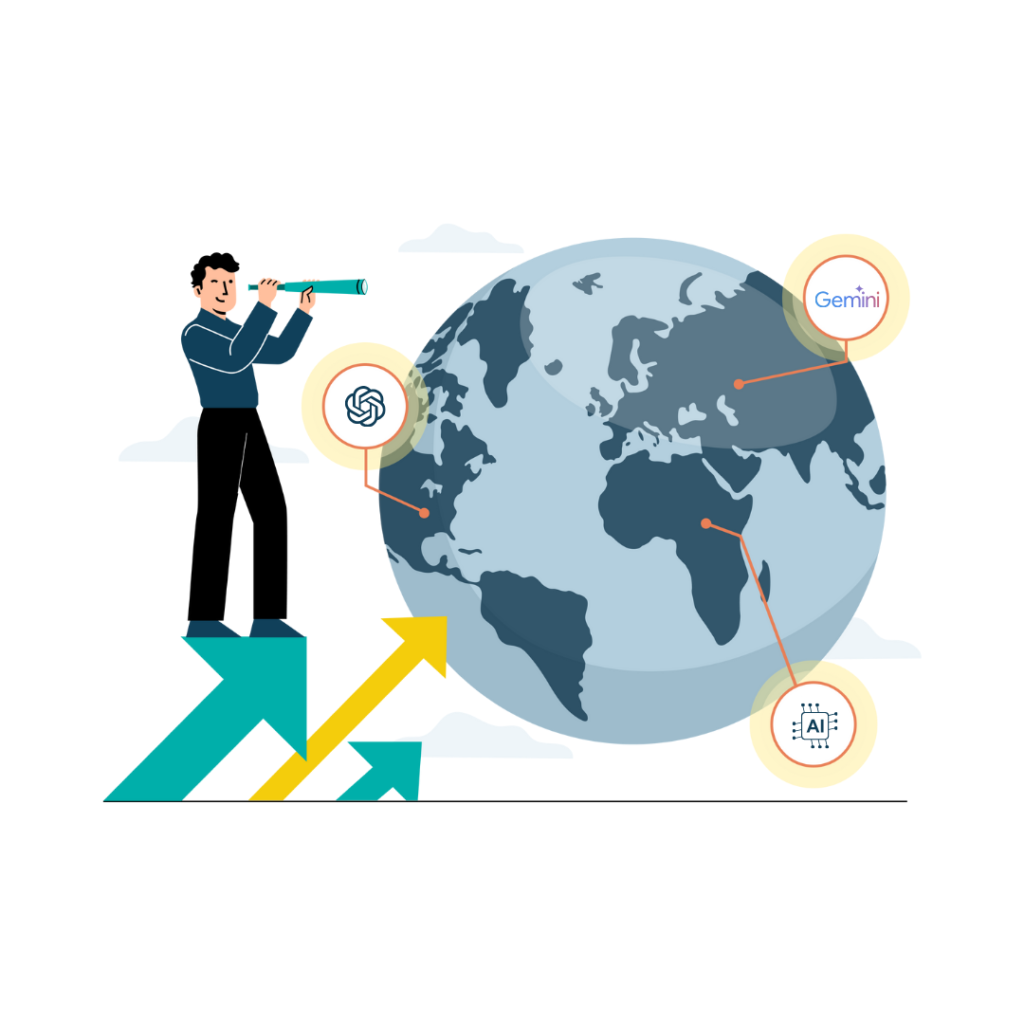Australia’s AI startup ecosystem has reached a turning point in 2025. For the first time, AI-first companies dominated venture funding deal counts, marking a shift from traditional tech investments to artificial intelligence solutions. With 470+ VC-backed AI startups commanding $11.7B in combined enterprise value, the landscape presents both significant opportunities and technical challenges.
This funding boom brings questions about technical viability and sustainable growth. While Australia demonstrates 3.4x AI enterprise value growth since 2019, investors are becoming more discerning about which companies can deliver on their AI promises. Technical leaders need to understand not just the funding landscape, but how to position their technology stacks and teams for the next wave of investment.
The Australian ecosystem offers unique advantages – seed valuations at meaningful discounts to the US while maintaining global ambition and strong government support through R&D tax incentives. However, success requires navigating complex technical due diligence, regulatory frameworks, and fierce competition for AI talent.
What are the current funding trends for AI startups in Australia compared to global markets?
Australian AI startups lead global capital efficiency with 1.22 unicorns per $1B invested, ranking #4 worldwide in decacorn creation. AI-first companies dominated Q1 2025 deal flow for the first time, with 62% of tracked deals featuring AI-related benefits.
Australia now hosts 470+ VC-backed AI startups with combined enterprise value representing 3.4x growth since 2019. The ecosystem includes 2 AI unicorns, with Harrison.ai’s $179M Series C round leading Q1 2025.
Seed valuations historically sit at meaningful discounts to the US, while entrepreneurs maintain global ambitions. This creates a unique environment where fund sizes are smaller and competition is limited at the seed stage.
R&D tax incentives provide immediate cash flow benefits for AI development. Seed-stage raises stayed steady through the downturn, dropping to 2.6 years in Q1 2025. Series A rounds are starting to move again, with median timing under five years for the first time since 2022.
How do investors assess the technical viability of machine learning models during funding rounds?
VCs evaluate AI startups through technical due diligence focusing on model accuracy, data quality, MLOps maturity, and production scalability. Key criteria include reproducible training pipelines, model versioning systems, monitoring capabilities, and demonstrated performance metrics that support the business case for 87% higher valuations.
Enterprise buyers demand not just performance—but provable, explainable, and trustworthy performance. This means startups need infrastructure that surfaces evidence of effectiveness before purchase, not just after deployment.
MLOps maturity becomes a competitive differentiator. Leading startups implement systematic evaluation processes using modern infrastructure tools for eval harnesses, agentic benchmarking environments, and real-time feedback loops.
Evaluations and data lineage aren’t just development features—they become part of a strategic layer of the AI stack, and a core requirement for procurement and governance. Companies need systems that track data sources, model versions, and performance metrics across their entire development lifecycle.
Production readiness separates serious contenders from research projects. Investors evaluate whether teams have tooling for multi-metric evaluations including accuracy, hallucination risk, and compliance monitoring, and support for model drift detection and continuous updates.
What AI technology stack should we choose for scalability and investor appeal?
Successful Australian AI startups leverage AWS infrastructure (SageMaker HyperPod, Trainium instances) for training, vector databases for search, and robust MLOps frameworks. Choose technologies that demonstrate clear scaling paths, cost predictability, and enterprise readiness while maintaining technical debt management.
As companies build AI-native and AI-embedded products, a new infrastructure layer has emerged—spanning models, compute, training frameworks, orchestration, and observability.
AWS dominates the Australian startup ecosystem, providing distributed computing environments with high-performance networking that ensures rapid data transfer between nodes, minimising latency for machine learning workloads.
Infrastructure decisions should account for rapid evolution in AI technology. Mixture-of-Experts architectures are being revived, while inference-time techniques like test-time reinforcement learning are gaining momentum.
AI infrastructure’s next phase will move from demonstrating that AI can solve problems to building systems that define, measure, and solve problems with experience and purpose. This means prioritising observability and systematic improvement.
Interoperability emerges as a key requirement. AI systems need tool use, inter-agent communication, identity management, memory sharing, and comprehensive error handling.
How do we build an AI-first engineering culture while maintaining development velocity?
Implement AI-first culture through hiring data scientists alongside ML engineers, establishing clear MLOps practices, and creating cross-functional teams that understand both AI capabilities and product requirements. Maintain velocity by standardising model deployment pipelines, automated testing for AI systems, and continuous integration for machine learning workflows.
Building and scaling an AI-first company requires skilled AI professionals across data science, machine learning engineering, and AI research roles. The key lies in encouraging experimentation, data-driven decision-making, and continuous learning.
Data Scientists convert raw data into actionable insights using statistics, programming, and machine learning knowledge, while Machine Learning Engineers take complex machine learning models and turn them into practical applications.
Process standardisation maintains velocity during transition. The AI landscape constantly evolves, making it essential to remain agile through adopting an iterative approach to AI development.
Which AI sectors are attracting the most investment in Australia right now?
Healthcare AI leads with Harrison.ai’s $179M Series C and 12 FDA clearances, followed by fintech AI (Airwallex’s $300M Series F) and creative AI (Canva’s continued growth). Vertical AI solutions targeting core professional workflows show highest ROI potential and investor interest.
Vertical AI refers to AI applications and platforms purpose-built for specific industries, leveraging LLMs and generative models to solve industry-specific problems across sectors like legal, healthcare, and finance. Unlike traditional vertical SaaS, Vertical AI can automate complex, repetitive language-based tasks.
LLM-native companies founded since 2019 are achieving 80% of the average contract value of traditional SaaS, posting approximately 400% year-over-year growth, and maintaining roughly 65% gross margins.
Core workflows include tasks central to the profession such as contract drafting for lawyers or financial modelling for bankers. AI adoption in core workflows often faces less resistance and delivers higher ROI.
AI unlocks markets once considered too niche or small for SaaS, extending serviceable markets and boosting margins.
How do we scale our AI infrastructure as we grow from seed to Series A?
Scale AI infrastructure through cloud-native architectures with auto-scaling capabilities, implement containerised model serving, establish monitoring and observability systems, and plan for data pipeline scaling. Focus on cost optimisation, performance benchmarks, and infrastructure as code to demonstrate technical maturity during Series A due diligence.
AI workloads differ fundamentally from traditional applications. The next phase will move from demonstrating that AI can solve problems to building systems that define, measure, and solve problems with experience and purpose.
Major cloud providers often subsidise initial AI workloads with free credits, masking the true cost of running agentic systems at scale. These credits often promote dependency on proprietary infrastructure, making it costly and technically challenging to migrate later.
Monitoring and observability become mission-critical capabilities. Companies like Netflix use ML-enabled chaos engineering to achieve system reliability during deployments.
Agentic AI systems initiate action, operating toward defined goals, interacting with APIs, databases, and sometimes humans, with limited oversight.
What regulatory frameworks do AI startups need to navigate in Australia?
Australian AI startups must comply with Privacy Act requirements for data handling, consider AI Ethics Framework guidelines, and plan for international expansion regulations (FDA for health-tech, financial services compliance). Proactive regulatory compliance becomes a competitive advantage for scaling globally.
The Privacy Act 1988 governs how personal information is collected, used, and disclosed. Australian AI startups must implement privacy by design principles and ensure transparent data handling practices that comply with the Australian Privacy Principles.
The Australian AI Ethics Framework provides voluntary guidelines that emphasise human-centred AI systems, fairness, privacy protection, reliability, transparency, accountability, and contestability.
Research shows 78% of consumers desire ethical AI standards, but only 21% have significant trust in tech companies to protect data. This gap creates regulatory pressure for stronger requirements.
Proactive compliance becomes a competitive advantage. Create data maps to identify where critical information is stored, leverage privacy-enhancing technologies, and foster a culture prioritising privacy awareness throughout the development lifecycle.
How do we position our AI capabilities to command higher valuations like other Australian AI startups?
Position for 87% valuation premiums by demonstrating clear AI differentiation beyond “table stakes,” showing measurable performance improvements, providing technical moats through proprietary data or models, and establishing clear scaling metrics. Focus on core workflow automation rather than supporting tasks to maximise TAM potential.
Key differentiators include proprietary data, depth of product integration, and economic value delivered. Focus should be on building robust moats via sector-specific knowledge and integration with industry systems.
As AI-native startups push deeper into industry-specific workflows, traditional SaaS players face a choice: evolve or become obsolete. Early winners solve core pain points which are often language-heavy or multi-modal.
ROI should be clear from day one without requiring spreadsheets to explain value. These tools unlock 10x productivity, reallocate labour to higher-value work, reduce costs, or drive topline growth. Defensibility stems from domain expertise: integrations, data moats, and multimodal interfaces.
The strongest teams quickly move beyond fine-tuning and into deep, verticalised utility. The best products are intuitive and embedded in existing workflows to make adoption seamless.
FAQ Section
What are the typical funding stages and amounts for AI startups in Australia?
Seed rounds typically occur around the 2.6-year mark with amounts ranging from $500K to $3M. Series A timing has improved to under five years, with amounts typically between $5M-15M.
Which Australian VCs are most active in AI startup investments?
Blackbird, Airtree, and Square Peg lead Australian AI investments. International firms like DST Global, Peak XV, and a16z are expanding Australian presence.
How do we hire data scientists and ML engineers in Australia’s competitive talent market?
Compensation shows 20-40% premiums for AI talent. University partnerships with UNSW, Melbourne, and ANU provide graduate pipeline access. Remote work enables international talent access.
What are the biggest technical debt risks when rapidly scaling AI systems?
Model maintenance and versioning create compounding complexity. Data pipeline technical debt accumulates faster than traditional software debt. Infrastructure scaling bottlenecks emerge when MVP architectures can’t handle production loads.
Should we pivot our existing SaaS product to incorporate AI features to attract investment?
Evaluate whether AI solves core user problems rather than adding features for investment appeal. Integration approaches work better than rebuilds for established products.
How does Australia’s AI startup ecosystem compare to Silicon Valley or European markets?
Australia offers superior capital efficiency with 1.22 unicorns per $1B invested. Talent costs remain 30-50% lower while maintaining comparable skill levels.
What are the best practices for implementing MLOps pipelines in early-stage AI companies?
Start with containerised model serving using Docker and Kubernetes. Implement automated testing for model performance and data drift detection. Use MLflow or Weights & Biases for experiment tracking.
How do we ensure our AI models are production-ready for enterprise clients?
Establish performance benchmarks including accuracy, latency, and throughput. Implement security measures including model encryption and access controls. Create audit trails for model decisions.
Where can we access Australian government support for AI startup development?
R&D tax incentives provide immediate cash flow benefits for AI development costs. Government programmes offer grants through Austrade and the Australian Research Council.
How do we manage data governance and model versioning as our AI team grows?
Implement centralised data catalogues with clear ownership and lineage tracking. Use Git-like versioning for models with automated testing. Establish data quality monitoring with automated alerts.
What business models are most successful for Australian AI startups?
SaaS+ models combining subscriptions with AI features show strongest growth. Vertical AI solutions command higher per-seat pricing. Usage-based pricing aligns with AI value delivery.
How do we build vs buy decisions for AI infrastructure in a resource-constrained startup?
Evaluate total cost of ownership including development time and maintenance. Build custom solutions only for core differentiating capabilities. Buy proven infrastructure components to accelerate time-to-market.
Conclusion
Australia’s AI startup ecosystem presents significant opportunities for technical leaders who understand both the funding landscape and technology requirements. The combination of capital efficiency, government support, and increasing investor sophistication creates a unique environment for AI innovation.
Success requires demonstrating clear value propositions, implementing robust MLOps practices, and navigating regulatory requirements while building defensible competitive moats. The shift toward vertical AI solutions creates opportunities for startups that solve core workflow problems.












